Need Your Help
In general, shorebirds live in flat, featureless, — usually pretty ugly places. There is not usually much of interest on a sandy beach or a mudflat. Your best chance of creating an artistically pleasing image is to get right down on the ground as close as possible to the bird’s eye level. I did that with Image #1 but not with Image #2 … I was, however, able to include some pretty neat habitat in each of these panoramic images. Please be so kind as to leave a comment and let us know which of the two images you believe to be the more beautiful, and what you liked about it. I am on the fence.
What’s Up?
I dropped Anita off at the lake early. With her 600 GM/a1 on a tripod; she sat in the marsh for two hours hoping to have some Black-necked Stilts land in front of her and copulate. I thought that she was totally nuts. But they did and they did! She got some very nice stuff. I headed back down at about 7:30am and came away with a very few decent Osprey and crane family photos. I worked on some images and took care of some business e-mails. I was glad to learn that IPT veteran Bob Willmschen sold his Canon 100-400 II in mint condition for $1499.00 in early May before it was even listed.
Today is Saturday 15 May 2021. The forecast for early this morning at ILE is for mostly sunny skies and a northeast breeze. I will be heading down to the lake very early and sitting in the lake next to Anita … Wherever you are, and whatever you are doing, I hope that you have a great day.
This blog post took about two hours to prepare and makes 142 consecutive days with a new one. Please remember that if an item — a Delkin flash card, or a tripod head, for example, that is available from B&H and/or Bedfords and is also available in the BAA Online Store, it would be great if you opt to purchase from us. We will match any price. Please remember also to use my B&H affiliate links or to save 3% at Bedfords by using the BIRDSASART discount code at checkout. Doing either often earns you free guides and/or discounts. And doing so always earns my great appreciation.
The BAA Used Gear Page
The Used Gear page continues to be very active. The BAA Used Gear Page is the place to sell your used photographic equipment. We will help you to get your gear sold quickly for 30 to 70% or more than what the big guys are offering … Doubt me? Check out the Recent Sales list at the bottom of the page.
Canon EF 100-400 f/4.5-5.6L IS II Lens
Dan Womack is offering a Canon EF 100-400 f/4.5-5.6L IS II lens in mint condition for $1449.00. The sale includes the front and rear lens caps, the tough fabric lens case, the original shipping box and insured ground shipping via major courier to lower-48 US addresses only. Your item will not ship until your check clears unless other arrangements are made.
Please contact Dan via e-mail.
This incredibly versatile zoom lens — with its amazing .98 meter close focus — was my favorite Canon telephoto zoom lens ever. By far. It is easy to hand hold, great for tight portraits, birds in flight, quasi-macro stuff, and lots more. For flight, it is even better with an R5! The lens sells new for $2399.00 so you can save some hard cash by grabbing Dan’s pretty much new lens now. artie
Please Remember
With income from IPTs now at zero, please, if you enjoy and learn from the blog, remember to use one of my two affiliate programs when purchasing new gear. Doing so just might make it possible for me to avoid having to try to get a job as a Walmart greeter and will not cost you a single penny more. And if you use Bedfords and remember to enter the BIRDSASART code at checkout, you will save 3% on every order and enjoy free second-day air shipping. In these crazy times — I am out at least forty to sixty thousand dollars so far due to COVID 19 (with lots more to come) — remembering to use my B&H link or to shop at Bedfords will help me out a ton and be greatly appreciated. Overseas folks who cannot order from the US because of import fees, duties, and taxes, are invited to help out by clicking here to leave a blog thank you gift if they see fit.
New and Better Bedfords Discount Policy!
You can now save 3% on all of your Bedfords photo gear purchases by entering the BIRDSASART coupon code at checkout. Your discount will be applied to your pre-tax total. In addition, by using the code you will get 2nd day air shipping via Fed Ex.
Grab a Nikon AF-S Teleconverter TC-14E III and save $14.99. Purchase a Canon EOS R5 and your discount will be $116.97. Purchase a Sony FE 600mm f/4 GM OSS lens and save a remarkable $389.94! Your Bedford’s purchase no longer needs to be greater than $1,000.00 for you to receive a discount. The more you spend, the more you save.
Money Saving Reminder
Many have learned that if you need a hot photo item that is out of stock at B&H and would enjoy free second-day air shipping, your best bet is to click here, place an order with Bedfords, and enter the coupon code BIRDSASART at checkout. If an item is out of stock, contact Steve Elkins via e-mail or on his cell phone at (479) 381-2592 (Central time). Be sure to mention the BIRDSASART coupon code and use it for your online order to save 3% and enjoy free 2nd-day air shipping. Steve has been great at getting folks the hot items that are out of stock at B&H and everywhere else. The wait lists at the big stores can be a year or longer for the hard to get items. Steve will surely get you your gear long before that. For the past year, he has been helping BAA Blog folks get their hands on items like the SONY a9 ii, the SONY 200-600 G OSS lens, the Canon EOS R5, the Canon RF 100-500mm lens, and the Nikon 500mm PF. Steve is personable, helpful, and eager to please.


Gear Questions and Advice
Too many folks attending BAA IPTs (remember those?) and dozens of photographers whom I see in the field and on BPN, are–out of ignorance–using the wrong gear especially when it comes to tripods and more especially, tripod heads… Please know that I am always glad to answer your gear questions via e-mail
|
|
|
This image was created on 11 May 2021 on the second day of my recent busman’s holiday at Fort DeSoto. Working on the Panning Ground Pod while seated, I used the Sony FE 600mm f/4 GM OSS lens, the Sony FE 2.0x Teleconverter, and The One, the Sony Alpha 1 Mirrorless Digital Camera (Body Only). ISO 500. The exposure was determined by Zebras with ISO on the rear wheel: 1/800 sec. at f/9 (stopped down 1/3 stop) in Manual mode. AWB at 9:09am when a light cloud obscured the sun for a bit. Tracking: Expand Spot/AF-C was active at the moment of exposure and performed perfectly. Click on the image to enjoy a wider version. Image #1: Semipalmated Plover on mudflat with invertebrate burrows, extreme pano |
Mudflat with Invertebrate Burrows
It is not uncommon to see large areas of exposed mudflats at North Beach in Fort DeSoto dotted with small mounds and pyramidal & irregularly-shaped structures of wet sand. Such landscapes remind me of Mono Lake, but on a much tinier scale, of course. They can be strangely beautiful. With no birds in sight, I set up my gear abutting a small pool on a rising tide with the flat as described above. The little sand piles were so pretty that I made a few images of them without any birds.
The habitat looked perfect for shorebirds and I was confident that I would get some birds. It was a case of if you sit, they will come. The SEPL featured in Image #1 was the first to venture into the shallow pool to feed. It was soon joined by a few more semi-plovers, about a dozen Dunlin, a Black-bellied Plover, and a Willet. Many of the shorebirds wound up coming quite close. Image #1, however, the one of those that showed the habitat quite well, was my favorite from the session by the pretty little mudflat.
The Panning Ground Pod
Having recently (again!) become enamored with ground level shooting, I have been using the Panning Ground Pod more and more when I am at the beach. It gets me right down on the bird’s level and, by using the rear monitor, it allows me to sit rather than to have to lie in the muck and the mud. As soon as I get several pairs of new reading glasses made by Zenni, I will always have a pair on when I am at the beach with the Panning Ground Pod. I will be teaching you a lot about how to use this great product in future blog posts with lots of examples of what it can do. We have six in stock right now.
|
|
Image #1A: AF Point screen capture for the Semipalmated Plover on mud flat with invertebrate burrows, extreme pano image |
You-Gotta-Be-Kidding-Me AF Performance
Can your camera body detect and track the eye of a distant, small-in-the-frame bird when you are working at 1200mm? The Sony Alpha a1 can. You will not get consistent results unless your camera is set up exactly right. If you own an a1 and are not getting the AF performance that you want and expect, consider joining the SONY a1 Info and Updates group. Scroll down for details.
The Image Optimization
By comparing Image #1 with Image #1A, the original capture, you can see my chosen crop, the background (and a bit of mud) clean-up, and the Gaussian Blur applied mostly to the background but to a bit of the foreground as well.
|
|
Image #1B: Photoshop trick used to level the Semipalmated Plover on mud flat with invertebrate burrows, extreme pano image |
A Great Photoshop Leveling Tip
In Digital Basics II, I describe several methods for leveling an images. One of my favorites involves the use of the Ruler Tool. For Image #1 I drew a line from the tip of the actual bill to the clearly defined tip of the bill in the reflection. Then I hit Image > Rotate > Arbitrary and then hit OK. Using my keyboard shortcuts the entire process take less than ten seconds. If you are a slow-poke. This image needed 1.41 degrees of clockwise rotation. My excuse? Without my glasses on, I cannot see the activated level on the rear monitor very well.
|
|
The BIRDS AS ART Current Workflow e-Guide (Digital Basics II).You can order your copy from the BAA Online Store here, by sending a PayPal for $40 here, or by calling Jim or Jennifer weekdays at 863-692-0906 with your credit card in hand. Be sure to specify Digital Basics II. |
The BIRDS AS ART Current Workflow e-Guide (Digital Basics II)
The image rotation, Gaussian Blur, and clean-up techniques mentioned above and tons more great Photoshop tips and techniques, along with all of my personalized Keyboard Shortcuts — are covered in detail in the BIRDS AS ART Current Workflow e-Guide (Digital Basics II), an instructional PDF that is sent via e-mail. Learn more and check out the free excerpt in the blog post here. While the new e-Guide reflects my MacBook Pro/Photo Mechanic/DPP 4/Photoshop workflow, folks using a PC and/or BreezeBrowser will also benefit greatly by studying the material on DB II. Note: folks working on a PC and/or those who do not want to miss anything Photoshop may wish to purchase the original Digital Basics along with DB II while saving $15 by clicking here to buy the DB Bundle.
Folks who learn well by following along rather than by reading can check out the complete collection of MP 4 Photoshop Tutorial Videos by clicking here. Note: all of the videos are now priced at an amazingly low $5.00 each.
You can learn how and why I converted all of my Canon digital RAW files in DPP 4 in the DPP 4 RAW Conversion Guide here. More recently, I became proficient at converting my Nikon RAW (NEF) files in Adobe Camera Raw. About two years ago I began converting my Nikon and Sony RAW files in Capture One Pro 12 and continue to do so today.
To purchase Capture One, please use this link. Then you can learn more about Capture One in the Capture One Pro 12 Simplified MP4 Video here. The next step would be to get a copy of Arash Hazeghi’s “The Nikon Photographers’ Guide to Phase One Capture One Pro e-Guide” in the blog post here.
You can learn advanced Quick Masking and advanced Layer Masking techniques in APTATS I & II. You can save $15 by purchasing the pair. Folks can learn sophisticated sharpening and (NeatImage) Noise Reduction techniques in The Professional Post Processing Guide by Arash Hazeghi and edited by yours truly. Please use this link to purchase NeatImage.
|
|
|
This image was created on 12 May 2021 on the last day of my recent busman’s holiday at Fort DeSoto. While standing, I used the hand held Sony FE 600mm f/4 GM OSS lens and The One, the Sony Alpha 1 Mirrorless digital camera. ISO 400. Exposure determined via Zebras with ISO on the rear dial: 1/2000 sec. at f/4 (wide open) in Manual mode. AWB at 9:29am with some faint clouds taking the edge off the sun. Tracking: Expand Spot/AF-C was active at the moment of exposure and performed perfectly by nailing the plover’s eye. Click on the image to see a larger version. Image #2: Snowy Plover, male on eggs, pano |
Why Stand?
First off, thanks to Anita North who shared a similar image of this bird on the nest with me, thus providing me with significant inspiration. I opted to stand to eliminate some foreground vegetation. I chose f4 for a similar reason – to render the vegetation in front of the bird on our right as out-of-focus as possible. Situations like this where I needed to keep the lens raised and steady without a tripod were very tough on my left shoulder. The shoulder is, however, feeling quite a bit better with a bit of rest and rehab.
|
|
Image #2A: AF Point screen capture for the for the Snowy Plover, male on eggs, pano image |
The Original and the AF Point
Here again you can note the pano crop and my beach clean-up efforts. I could have added either teleconverter and made an image with the bird much larger in the frame, but inspired by Anita, I went with the wider view so as to include the mighty attractive beach vegetation.
As for the Sony Alpha a1 AF system, what can I say? The results that you see above are typical of those achieved with Animal Eye Tracking. If you own an a1 and are not getting the results that you want and expect, consider joining the SONY a1 Info and Updates group. The details are immediately below.
Sony Alpha a1 AF
Barring operator error, the performance of the Sony Alpha a1 AF system at any focal length — as we saw in Image #1 above, is, when the a1 is set up properly as detailed in the in e-mails to the Sony Alpha a1 Info & Updates group, more than remarkable. Early on, there was lots of discussion within the group with many preferring multiple back button approaches. For me a simple shutter button approach with the right AF settings that yield 99% sharp-on-the-eye images is best. By far. It is super-simple and mega-effective. In the next SONY Alpha a1 Set-up and Info Group e-mail, I will be sharing what I have learned as to when and it what situations it is best to abandon Wide. We have already learned to limit the AF Area choices and to switch AF Areas quickly and conveniently. The default method of switching AF points with the C2 button is both slow and cumbersome.
SONY Alpha a1 Set-up and Info Group
The SONY Alpha a1 Set-up and Info Group is going great guns as folks chime in with thoughtful questions and experience-based advice. We are now up to an astounding 41 folks. Early on, we discussed the myriad AF options. I gave my opinion as to the best one for flight and general bird photography. More recently, we have been in contact with folks at SONY sharing our thoughts, experiences, and frustrations with the EVF blackout problem.
All who purchased their Alpha a1 bodies via a BAA affiliate link will receive a free subscription to the Sony Alpha a1 Set-Up and Info Updates after shooting me their receipts via e-mail. (Note: it may take me several days to confirm B&H orders.) This same service may be purchased by anyone with an a1 body via a $150.00 PayPal sent to birdsasart@verizon.net indicating payment for Alpha a1 Info Updates. Alternatively, folks can call Jim weekdays at 1-863-692-0906 to pay via credit card. New members will receive composite e-mails that summarize all previous discussions.
Typos
With all blog posts, feel free to e-mail or to leave a comment regarding any typos or errors.


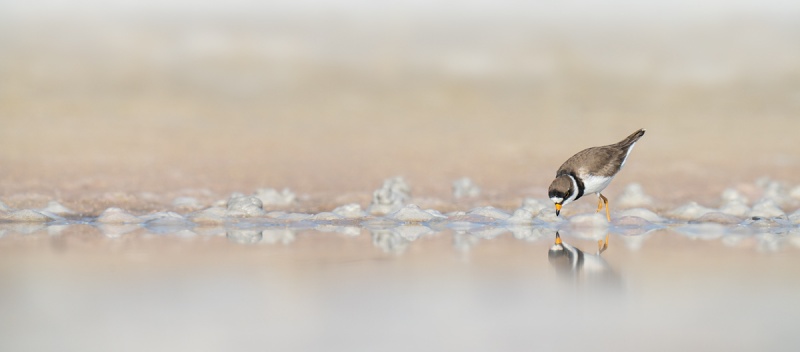
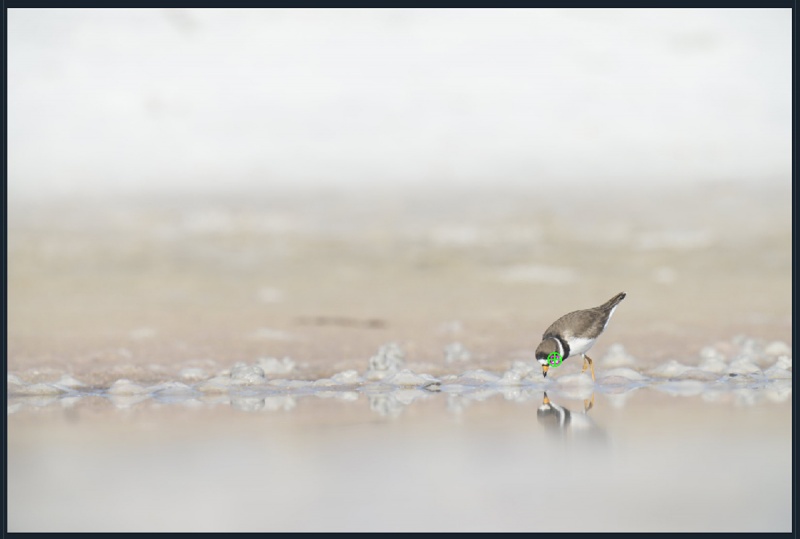
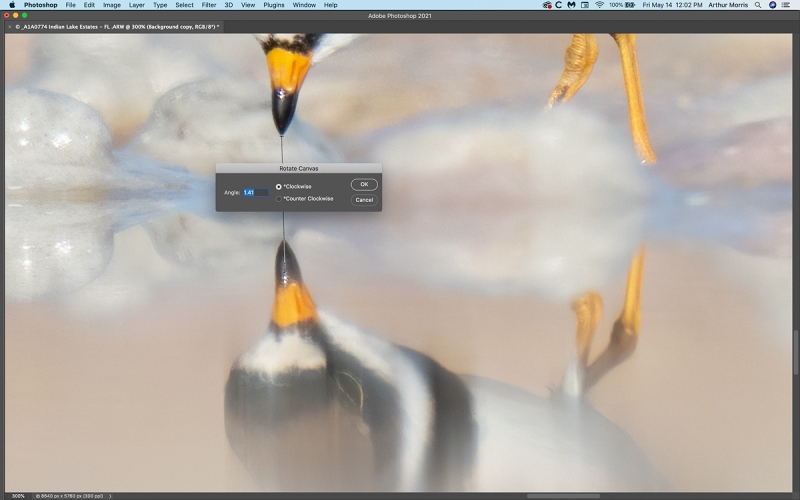

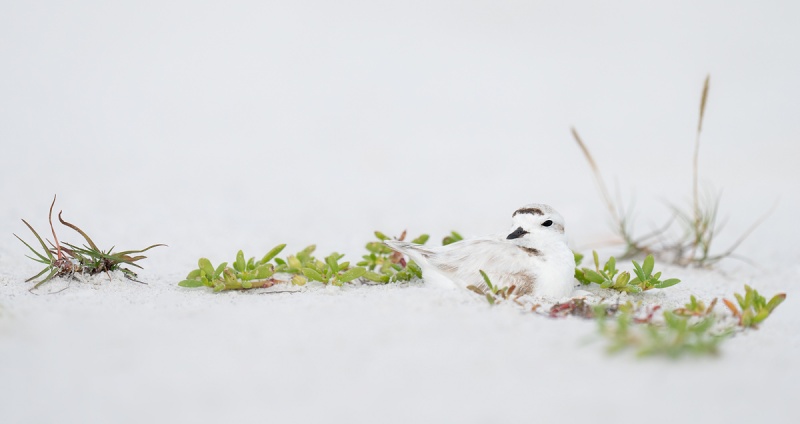
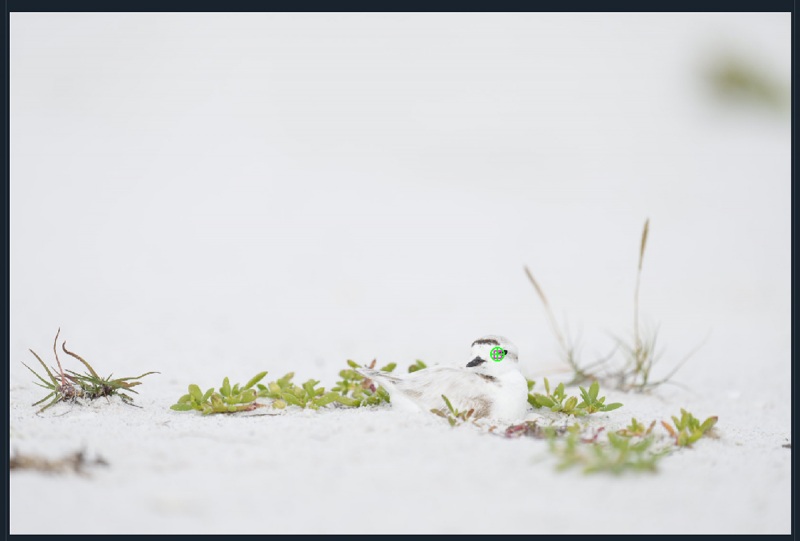













Wow I really like them both. The crop sizing really gives a good perspective of both environments. I think #1 is more interesting as the subject shows action and you get to see sea foam in a beautiful picture. The little guy has a lot of territory cover.
Image #2 is my favorite. I like the pano, color of the grasses, position of the bird and the way it is looking into the frame. The bird has enough color so it can be seen when framed by the greenery. Thanks for sharing.
Glad to see you found the Snowy Plover at the north end
Thanks. This one was pretty hard to miss. But what a lovely set-up.
with love, artie
Both images are lovely for a variety of reasons, I like the pano perspective in image 1 and agree it is worth experimenting with trimming a bit from the right edge. The second image is a nice high key photo and I was debating about removing the various grasses. At first I though about eliminating the oof grass on the right side of the frame and then then rejected that as it creates a feeling of depth. One might want to clone out the dark clump on the left side as it pulls the eye away from the plover though at the same time it lends some validity to the sense of camouflage.
Thanks, Adam.
At first, Anita did not like that clump either. Now she likes it. I loved it from the get go, in part, because it provides a sort of soft/sharp contrast and helps move the eye around the frame. For me.
with love, artie
Boy oh boy, this is a hard one for me as both images sing to me. I spend a lot of time on the ground at Ft D and create similar 1:2 and 1:3 crops so I really relate to these. If I had to pick one I believe I’d go with the snowy simply because of the nesting story it’s telling. Love both.
A tough choice for sure. I will go with image #2. The vegetation gives me a sense of how isolated the nesting bird is on the beach.
I prefer #1 by far. The bird is more prominent as is the appearance of it looking at its reflection. I find my eyes keeps going back and forth across the panoramic ending up at the bird. The clean edges of the waves support the panoramic effect. In image #2 there is too much light space at the top and there appear to be several smudges in the white space.
I like shots with the environment. #2 is my fav due to the color contrasts.
I prefer #2. Head angle and the added color of the vegetation.
Thanks, Alan. I forgot to mention in the post that as I was struggling to hold the 600 on this static subject I was praying for it to look back to my left. And was thrilled when it finally did. On BPN we call that the look-back head turn.
with love, a
Art: By this time, I’m sure you know which image I prefer — #2 without a doubt. It is a beautifully balanced, artistic composition. I would have deleted #1 if it were mine. Different strokes for different folks (obviously, since some expressed a preference for #1).
Hey Pat, Thanks for commenting. I can say this because you are only a dear friend: I love, love, love the first image for many (good) reasons. I have no clue as to how you could even think about deleting it …
with love, a
ps: You might consider a check-up from the neck up 🙂
Hi Artie, As usual these are both nice images but I like the second one better. I have always been a fan of high key images and I like the position of the nesting bird mingled in the soft green vegetation. Also, the vertical vegetation on the right does a nice job of framing the bird. Nice!
I like image #1 but I would crop off about 35% of the left half of the frame — I feel like it’s too much empty space.
Funny how that works — I was thinking of taking a bit off of the right …
with love, a
Under Heading: The Panning Ground Pod, you might want to change to word sue to use.
Thanks and fixed with love, a
Beautiful images, however, I find the blurred vegetation in the right bottom corner of Image 2, distracting and so agree with Elinor’s comment….
See my reply to Elinor to learn why your suggestion is a ridiculous one 🙂
with love, a
i like no 1 pano, it has some vegetation clean up. it is also sharper focus and color. i also like the shape of panos versus square or rectangular.
Thanks for leaving a comment, Charles. Note: they are both exceedingly sharp.
with love, a
Both are gorgeous panos with just superb composition. Doing a pano makes them outstanding. I’m not sure why but I think I would have liked a smaller f stop to make all of the vegetation sharp in #2. However, to me, these two photos are some of the very best.
Found something else I like a lot–#1, the reflection gradually blurring off.
Thanks. I agree. Both stunning.
re:
I’m not sure why but I think I would have liked a smaller f stop to make all of the vegetation sharp in #2.
That is bad thinking. In order to get the oof vegetation on our right in sharp focus, you would have needed f/12,800 … Even at small apertures super-telephoto lenses do not produce deep d-o-f.
with love, arite